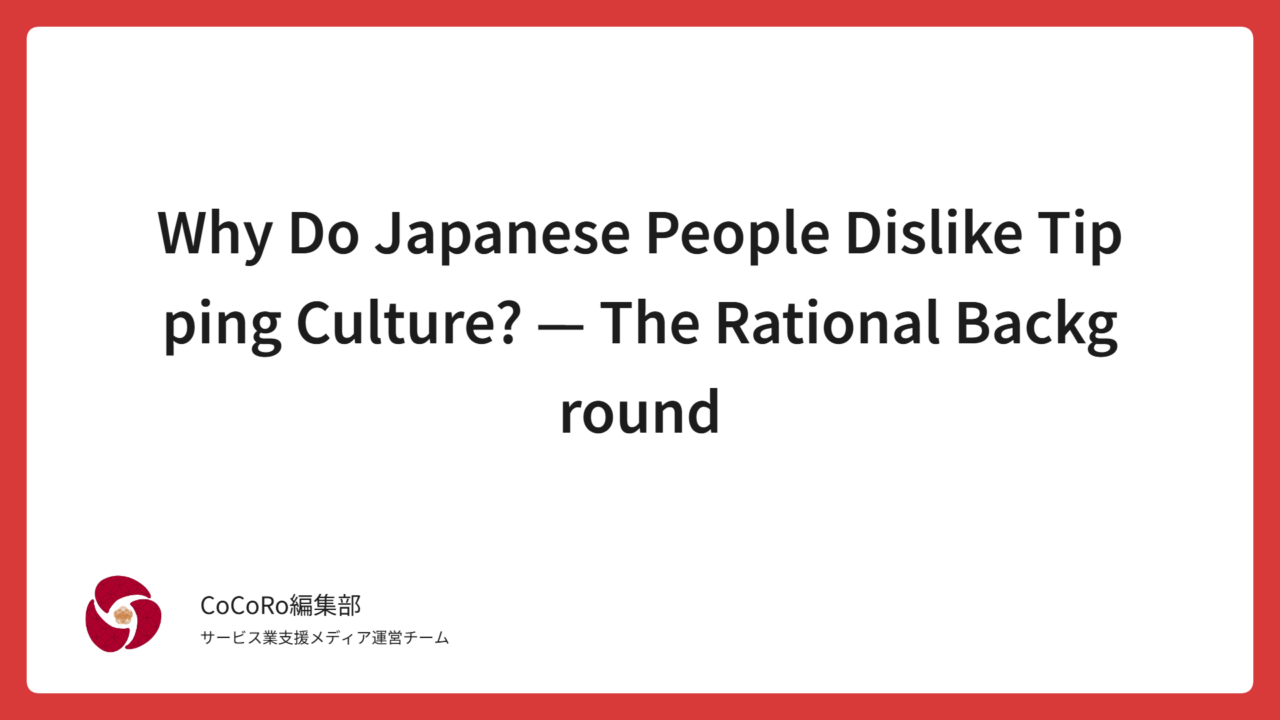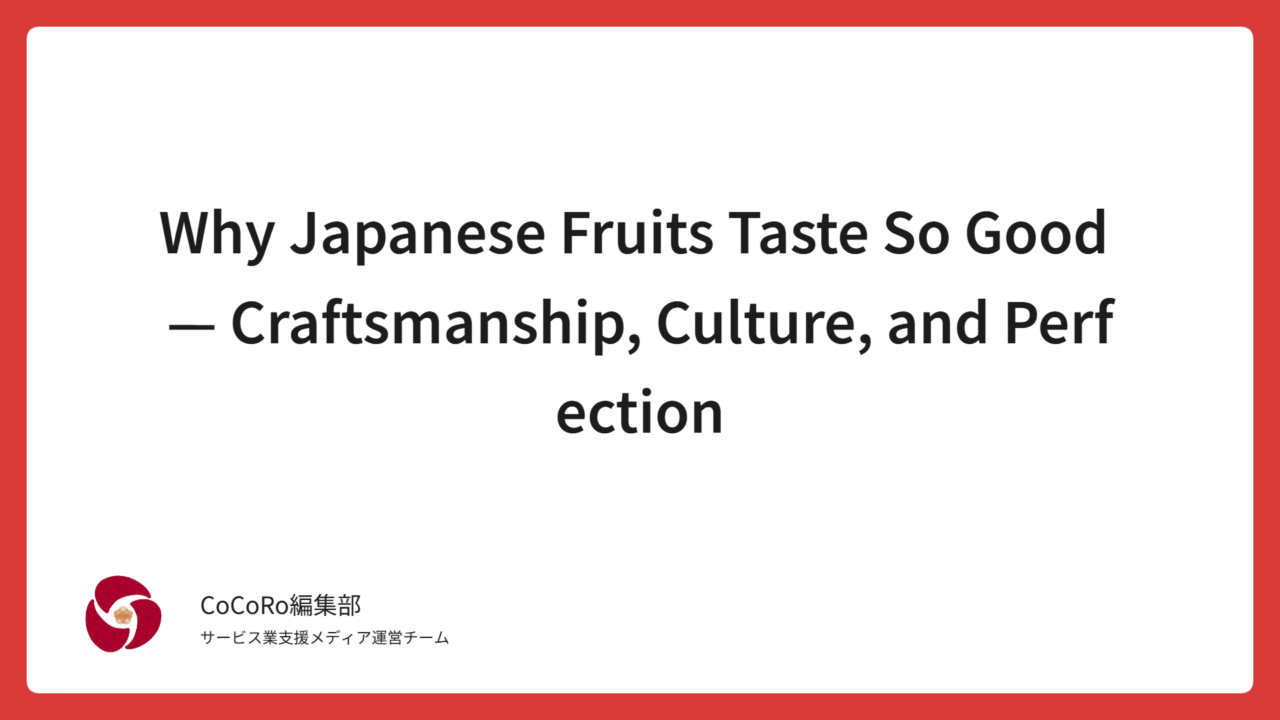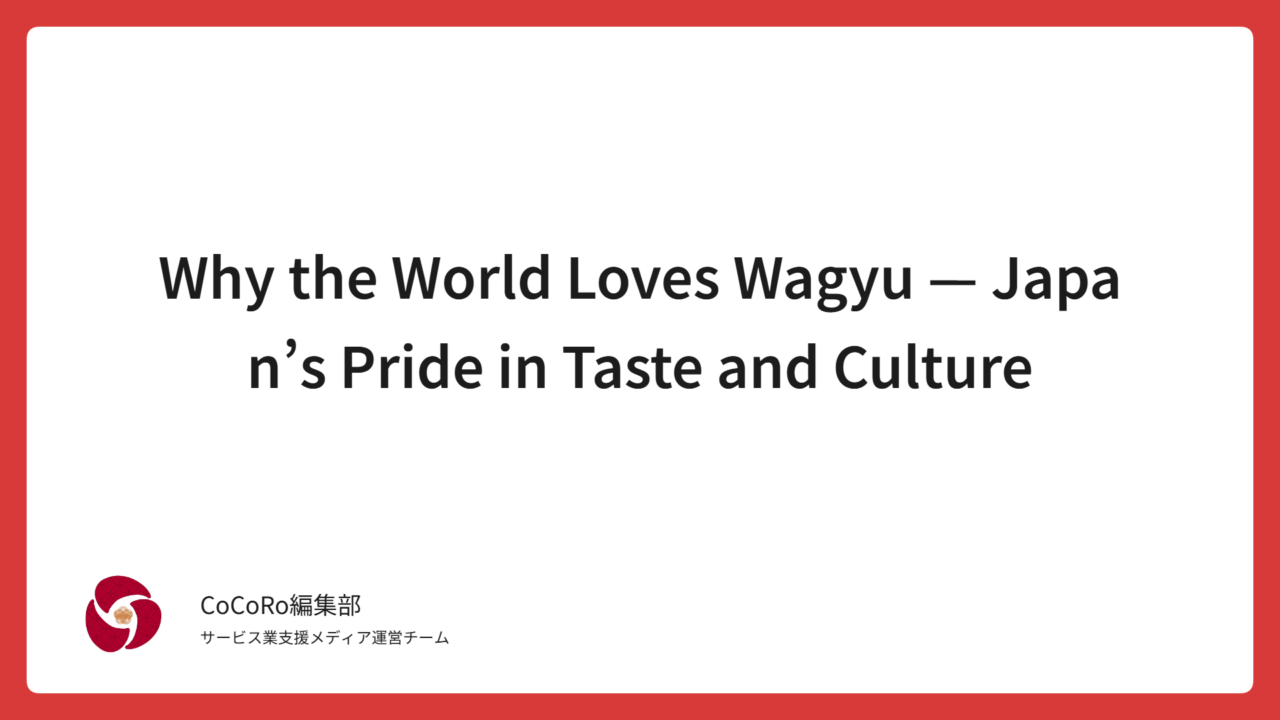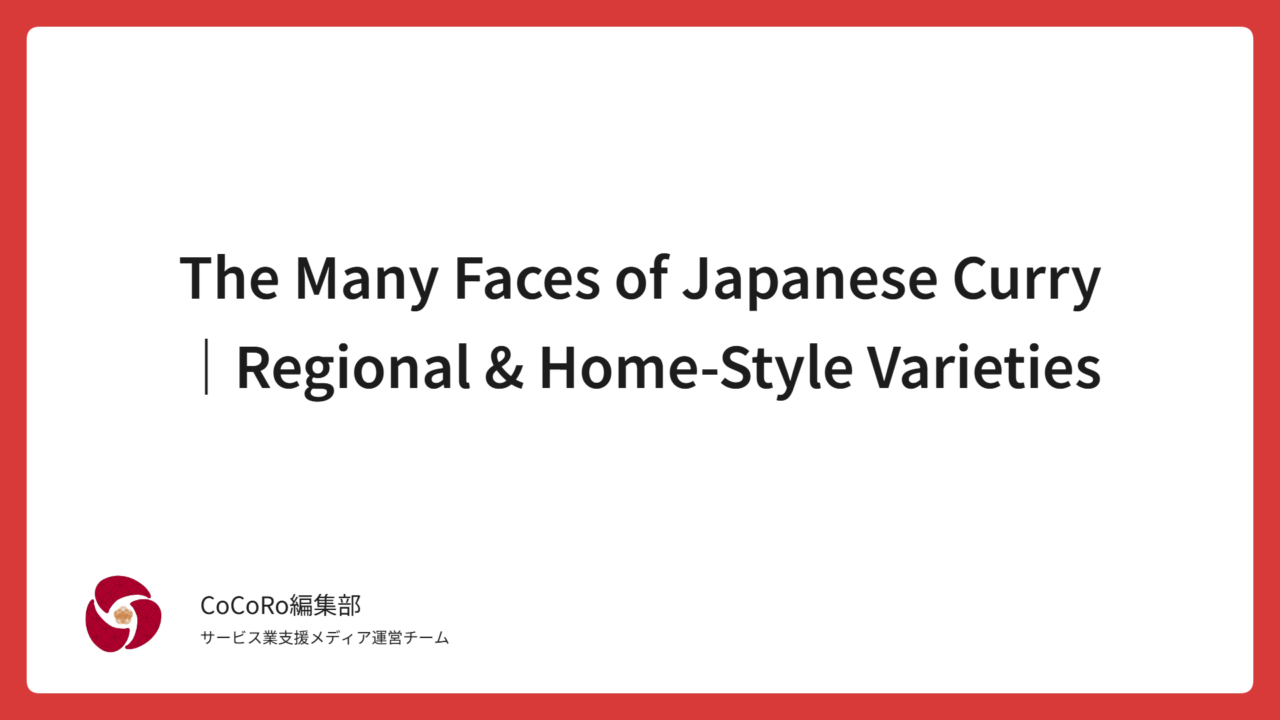
- “The Diverse Curry Culture Across Japan’s 47 Prefectures”
- Prologue: The Hidden Depths of Japanese Curry That the World Has Yet to Discover
- Chapter 1: The Beginning of Japanese Curry — From Meiji-Era Import to National Dish
- Chapter 2: The Diversification of Curry — Fusion with Western, Japanese, and Chinese Cuisine
- Chapter 3: The “Regional Flavor” Born from Japan’s Home-Style Curry
- Chapter 4: Unique Regional Curries — The Diverse World of “Gotochi Curry”
- Chapter 5: The Infinite Evolution of Toppings and Styles
- Chapter 6: The Untold Diversity of Japanese Curry — What the World Has Yet to Discover
- Chapter 7: Looking Ahead — The Future of Japanese Food Culture Through Curry
- Final Chapter: Curry as a Symbol of Multicultural Coexistence
“The Diverse Curry Culture Across Japan’s 47 Prefectures”
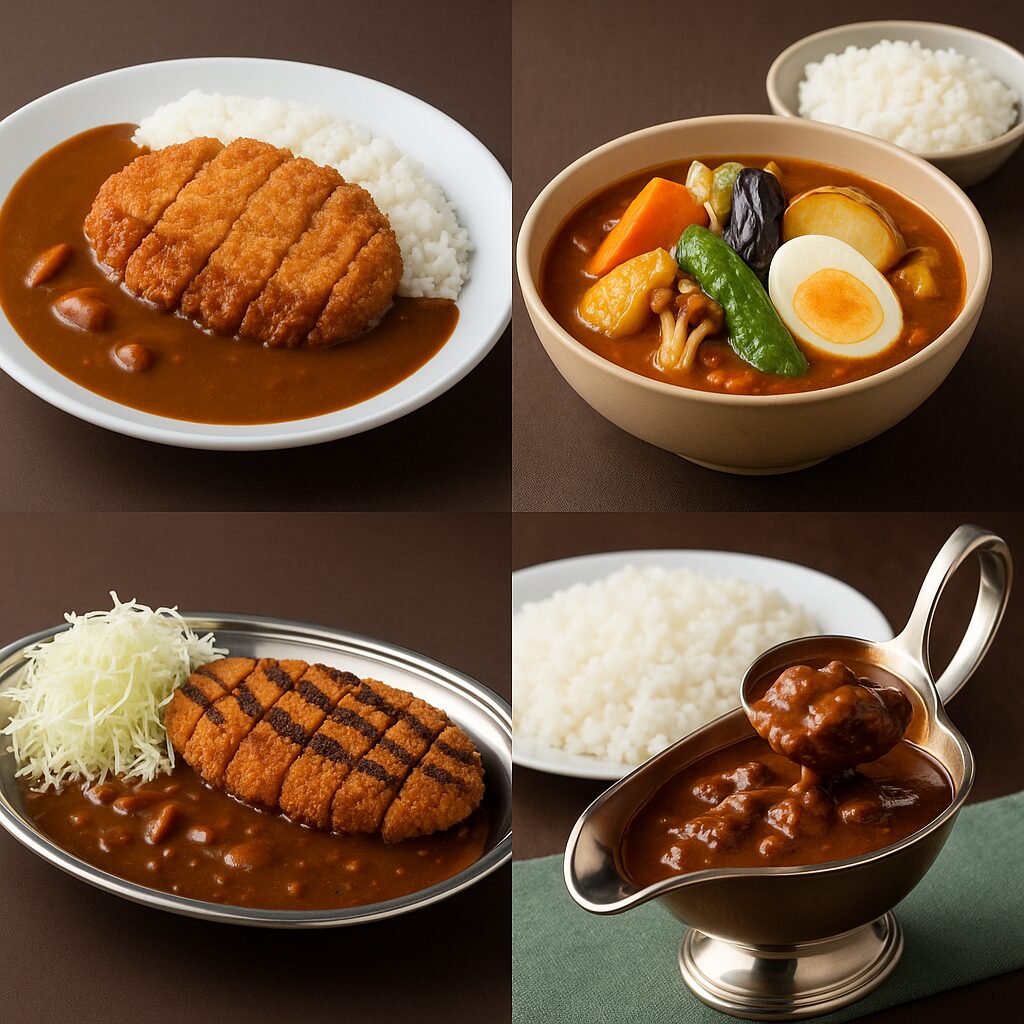
Prologue: The Hidden Depths of Japanese Curry That the World Has Yet to Discover
When people overseas hear the words “Japanese curry,” they usually picture katsu curry or the style popularized by CoCo Ichibanya — a thick, mildly spiced sauce poured over rice and eaten with a spoon.
That image certainly represents Japanese-style curry, but in truth, it’s only one piece of a much broader and more diverse curry culture found across Japan.
Since its introduction to Japan during the Meiji era more than 150 years ago, curry has continually evolved — adapting to homes, schools, restaurants, and even regional traditions.
Today, this long history of adaptation has given rise to a unique curry culture across all 47 prefectures of Japan.
In this article, we explore the diversity of Japanese curry through three perspectives — its history, home cooking, and regional culture.
By the end, you may discover a side of Japan that’s quite different from the one you thought you knew — a nation seen through the lens of its many curries.
Chapter 1: The Beginning of Japanese Curry — From Meiji-Era Import to National Dish
Curry was first introduced to Japan in the early Meiji period, around the 1870s.
Surprisingly, it didn’t come directly from India — it arrived via Great Britain.
At that time, the British Royal Navy had adopted a dish known as “curry stew” — a nutritious, spiced meat-and-vegetable stew.
Inspired by this, the Imperial Japanese Navy introduced curry to its own menu.
The navy sought a meal that combined meat, vegetables, and rice in a single dish to prevent beriberi, a common deficiency disease among sailors.
Curry perfectly met that need.
By the late Meiji period, Western-style restaurants in Ginza and Yokohama began serving “rice curry”, introducing it as a fashionable Western dish.
From there, curry gradually spread throughout society, and by the early Shōwa era, it had become firmly established in military canteens, school lunches, and ordinary households across Japan.
Unlike in India or Europe, “curry rice” in Japan took root as a Western-style dish served with plain white rice, not with bread or naan.
It became a form of curry found nowhere else in the world.
Chapter 2: The Diversification of Curry — Fusion with Western, Japanese, and Chinese Cuisine
The Japanese are masters at adapting foreign dishes to suit their own way of life — and curry was no exception.
Fusion with Western Cuisine: Beef Curry and European-Style Curry
In hotel restaurants, a new style known as “European-style curry” emerged — inspired by French demi-glace sauce.
This rich, roux-based curry used red wine and beef broth to create a deep, savory flavor,
a tradition still preserved today in long-established Western-style restaurants in places like Ginza and Kobe.
Fusion with Japanese Cuisine: Curry Nanban and Dashi-Style Curry
At traditional soba restaurants, a dish called “curry nanban soba” became popular —
a comforting noodle soup made by combining Japanese dashi broth with curry powder.
Its thick, savory sauce perfectly suited the Japanese palate, and the flavor soon spread to udon and rice-bowl dishes as well.
Fusion with Chinese Cuisine: Curry Fried Rice and Curry Gyoza
In neighborhood Chinese diners, a uniquely Japanese-style Chinese curry was born —
adding curry flavor to classic dishes like fried rice and ramen.
Over time, this creative trend evolved into new favorites such as curry ramen and curry gyoza.
In this way, curry became a bridge connecting Western, Japanese, and Chinese cuisine — a dish that transcends culinary boundaries and unites Japan’s diverse food culture.
Chapter 3: The “Regional Flavor” Born from Japan’s Home-Style Curry
Curry truly became Japan’s national dish after World War II.
In 1968, Otsuka Foods released Bon Curry, the world’s first retort-pouch curry,
and in 1973, House Foods introduced Vermont Curry — a mild, sweet flavor that even children could enjoy.
These products helped curry spread rapidly to households across the country.
Roux — The Common Language of Japanese Curry
The invention of instant curry roux made it possible for anyone to cook curry easily at home.
What’s fascinating, however, is that even when using the same roux, every household still creates its own unique flavor.
- Some families slowly sauté onions until they turn sweet and golden.
- Others add Worcestershire sauce or even a bit of chocolate as their secret ingredient.
- The choice of meat — pork, beef, or chicken — also depends on each household.
In other words, curry became a reflection of each family’s individuality — a dish that expresses the unique character of every home in Japan.
As the flavors of each household accumulated over time,
they gradually shaped the distinct tastes of each region.
The incredible diversity of Japanese curry began right there — in the kitchens of ordinary homes.
Chapter 4: Unique Regional Curries — The Diverse World of “Gotochi Curry”
Across Japan, regional “Gotochi Curries” have evolved to showcase local ingredients and culinary traditions.
Including packaged varieties, there are said to be over 5,000 types of Japanese curry today.
Hokkaido: Soup Curry
In the 1990s, a Sapporo restaurant called Magic Spice introduced what became known as “drinking curry” — the origin of Hokkaido’s famous soup curry.
The dish features a fragrant, spice-rich broth filled with large pieces of vegetables and chicken, enjoyed with a spoon.
Designed to warm the body in Hokkaido’s cold climate, it’s the perfect example of a regionally inspired Japanese curry.
Kantō Region: Yokosuka Navy Curry
The recipe faithfully recreates the Meiji-era Japanese Navy curry,
featuring a simple combination of beef, potatoes, and carrots.
Today, Yokosuka proudly calls itself “The City of Curry,” and the dish has become a key part of its local tourism appeal.
Hokuriku Region: Kanazawa Curry
A thick, rich roux, finely shredded cabbage, a crisp cutlet, and a stainless-steel plate —
the unforgettable “Kanazawa-style format.”
It’s a perfectly preserved local brand that carries the spirit of Shōwa-era Western cuisine.
Kyushu Region: Mojikō Baked Curry
The dish is made by layering curry, cheese, and an egg over rice,
then baking it in the oven until golden and aromatic.
This fusion of rich flavor and gentle creaminess perfectly embodies the Western-style culinary spirit of Kyushu.
In this way, each region’s climate, ingredients, and local tastes have shaped its own style of curry.
Japan has entered an era where curry tells the story of each region —
a true reflection of its people and their culture.
Chapter 5: The Infinite Evolution of Toppings and Styles
The greatest charm of Japanese curry lies in its freedom.
There are no rules for toppings or how to eat it —
a true symbol of the “democratization” of curry culture in Japan.
Katsu Curry — A Happy Marriage Between Western Cuisine and Japanese Curry
Born during Japan’s postwar Western food boom,
Katsu Curry combines crispy breaded cutlet with a thick, savory curry sauce —
a dish often called the ultimate comfort food representing the Japanese palate.
The Diversification of Curry Toppings
Cheese, soft-boiled eggs, eggplant, spinach, fried chicken, shrimp cutlets —
there are countless variations of Japanese curry,
each unique to a home or restaurant.
In recent years, vegan-friendly and gluten-free curries have also emerged,
reflecting the modern evolution of Japan’s curry culture.
The Revival of Spice Curry in Japan
Centered in Osaka, a new “Spice Curry” boom is spreading across Japan.
This style uses no flour, highlighting the natural aroma and complexity of spices themselves.
It represents a return to curry’s roots, while at the same time creating an entirely new expression of Japanese curry.
Chapter 6: The Untold Diversity of Japanese Curry — What the World Has Yet to Discover
Outside Japan, “Japanese curry” is often synonymous with Katsu Curry —
a crispy cutlet served with thick curry sauce over rice.
But in reality, Japan’s curry culture is far broader, deeper, and more diverse than most people realize.
Culinarily speaking, Japanese curry is a true hybrid —
a dish that transcends Western, Japanese, Chinese, home-style, and regional cuisines.In terms of flavor, Japanese curry is endlessly flexible —
ranging from mild to extra-spicy,
and allowing complete freedom in ingredients: seafood, meat, or vegetables.- Socially, Japanese curry exists as a shared “language” —
served everywhere from school lunches to luxury hotel restaurants.
つまり日本では、カレーが「国民共通の体験」になっているのです。
In recent years, global brands like Wagamama in the UK and CoCo Ichibanya from Japan
have expanded worldwide, turning “Japanese curry” into an international brand.
The next thing that will amaze the world is surely the diversity of Japan’s local and home-style curries.
Chapter 7: Looking Ahead — The Future of Japanese Food Culture Through Curry
Japanese curry is far from being a “finished dish.”
It continues to evolve even today.
- The Rise of “Individuality-Driven” Curry Brands — From Spice Curry to Craft Curry
- Developing “Regional Brand Curries” Linked to Local Revitalization
- English Packaging for Global Exports and Inbound Tourism Demand
- Adapting to Vegan, Low-Carb, and Health-Conscious Lifestyles
Curry is no longer just a dish —
it has become a cultural symbol of Japan’s diversity and creativity.
Final Chapter: Curry as a Symbol of Multicultural Coexistence
Born in India, refined in Britain, and reinvented in Japan —
now, Japanese curry is being exported back to the world.
The journey of curry is, in many ways, a relay of cultures.
In Japan, its flavor has become a part of family memories,
a source of regional pride,
and a message to the world that speaks through food.
In every plate of curry lies a connection that transcends borders and generations.
And that is the true reason why Japanese curry is loved all around the world.


